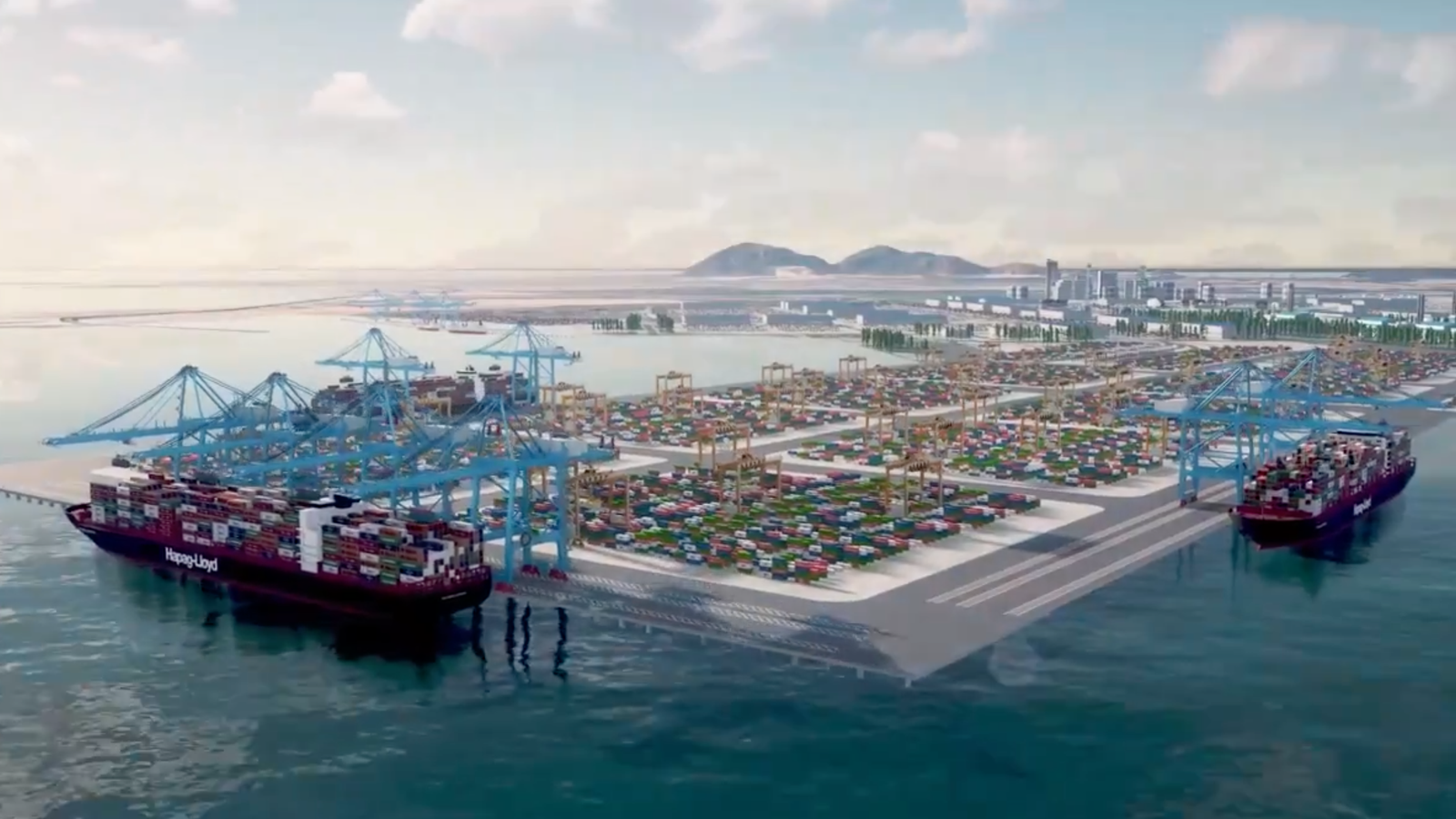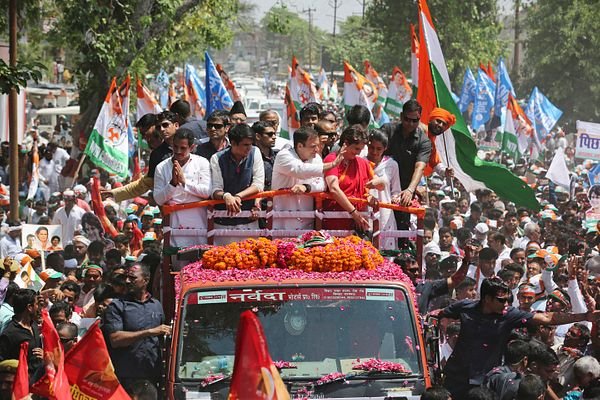Context
- The Great Nicobar port is a proposed large transshipment and commercial port at Galathea Bay on Great Nicobar Island.
- The plan includes a major container terminal, airport upgrades, power infrastructure and township development.
- The proposal has prompted debate because it claims both strategic benefits for maritime security and large economic gains, while also raising concerns about environmental damage, tribal displacement and doubtful commercial viability.
What the Project Entails?
- The project envisions a world–class container terminal designed to handle very large volumes of cargo.
- It also includes new airport facilities, power plants and residential and commercial infrastructure to support port operations and associated economic activity.
Strategic and Economic Rationale Offered for the Project
- Proponents say a megaport in Great Nicobar will reduce India’s dependence on foreign transshipment hubs such as Colombo and Singapore.
- They argue the port can strengthen India’s maritime presence near key sea lanes, improve surveillance and deterrence in the eastern Indian Ocean, and drive regional economic development by attracting shipping services and investment.
Challenges and Way Forward
| Category | Challenges | Way Forward / Solutions |
| 1. Structural & Commercial Limitations | • Absence of a natural hinterland, industries, or urban centres to generate cargo traffic. • No local logistics or industrial base to anchor port volumes. • Feeder services and short-sea shipping routes are undeveloped. • Lack of strong carrier relationships; high dependence on foreign hubs. | • Develop integrated logistics corridors linking Indian mainland ports to regional shipping routes. • Offer targeted incentives to attract shipping lines while ensuring cost competitiveness. • Encourage local industry clusters through special economic zones (SEZs) and food-processing hubs near potential feeder ports. |
| 2. Logistical & Operational Constraints | • The island’s remoteness (1,200 km from mainland) increases transportation and operational costs. • High cost of provisioning, fuel, and personnel movement. • Lack of feeder network increases turnaround time and reduces carrier interest. • Indian ports already have higher port–handling charges compared to regional competitors. | • Improve digital port management and reduce bureaucratic costs to make Indian terminals more competitive. • Establish limited–scale logistical support facilities rather than full-fledged transshipment terminals. • Build partnerships with private logistics firms for cost-efficient supply operations. |
| 3. Environmental & Social Risks | • Threats to coral reefs, mangroves, and marine biodiversity from dredging and large-scale construction. • Displacement and livelihood disruption among indigenous Nicobarese and Shompen tribes. • Risk of ecological imbalance, pollution, and long-term habitat loss. | • Conduct rigorous Environmental Impact Assessments (EIA) with transparent public consultations. • Ensure legal safeguards, consent, and compensation mechanisms for tribal communities. • Adopt low-impact, modular development models prioritising ecological restoration. |
| 4. Strategic & Security Dimensions | • Strategic justification overlaps with existing naval infrastructure like INS Baaz. • Blurring of commercial and defence objectives creates confusion in planning and accountability. • Overemphasis on “strategic presence” may lead to militarisation at the cost of ecological stability. | • Strengthen maritime surveillance, radar coverage, and naval logistics under dedicated defence infrastructure. • Pursue a dual-use model with clear civilian and defence demarcation. • Focus on capacity–building in nearby mainland ports such as Vizhinjam and Vadhavan to enhance national maritime presence. |
| 5. Economic & Financial Risks | • High capital cost and long gestation period with uncertain commercial returns. • Risk of becoming an underused “white elephant” due to unrealistic traffic projections. • Poor return on investment compared to upgrading existing ports. | • Promote public–private partnerships (PPP) with strict performance accountability. • Conduct independent cost–benefit analysis and demand forecasts before sanctioning large investments. • Diversify investment towards improving port connectivity, inland waterways, and coastal shipping. |
| 6. Governance & Implementation Gaps | • Weak institutional capacity and fragmented inter-agency coordination. • Limited transparency in project planning and public participation. • Past research centres and initiatives in the region underperformed due to poor follow-up. | • Establish a dedicated Great Nicobar Development Authority ensuring inter-ministerial coordination. • Strengthen institutional monitoring, periodic reviews, and parliamentary oversight. • Engage local stakeholders, civil society, and scientific institutions in project evaluation. |
Conclusion
A port at Great Nicobar is a high-cost, high-risk project that lacks the natural cargo base, feeder network and logistical advantages essential for a successful transshipment hub. The strategic and economic goals tied to the project can be achieved more sustainably by strengthening existing infrastructure, improving logistics and selectively enhancing defence capabilities without imposing major ecological and social costs.
| Ensure IAS Mains Question Q. Critically evaluate the proposal to develop a major transshipment port at Great Nicobar in light of India’s maritime logistics requirements, environmental commitments and strategic priorities. Suggest viable alternatives and safeguards. (250 words) |
| Ensure IAS Prelims Question Q. Consider the following statements regarding the proposed Great Nicobar Port Project at Galathea Bay: 1. The port aims to reduce India’s dependence on foreign transshipment hubs like Colombo and Singapore. 2. The project will automatically attract high cargo traffic due to its large container terminal capacity. 3. The port has been criticised for potential ecological damage and displacement of indigenous communities. Which of the statements given above is/are correct? a) 1 and 2 only b) 2 and 3 only c) 1 and 3 only d) 1, 2 and 3 Answer: c) 1 and 3 only Explanation: Statement 1 is correct: One of the main objectives of the Great Nicobar Port is to reduce India’s reliance on foreign transshipment hubs such as Colombo and Singapore, thereby strengthening India’s maritime trade autonomy. Statement 2 is incorrect: Simply building a large container terminal does not automatically attract cargo traffic. Transshipment hubs require a hinterland, feeder networks, carrier loyalty, industrial connectivity, and integrated logistics. Without these, the port is unlikely to achieve projected volumes. Statement 3 is correct: The project faces significant environmental and social concerns, including potential damage to coral reefs, mangroves, and marine biodiversity, as well as displacement of the indigenous Nicobarese and Shompen communities. |
Also Read | |
| UPSC Foundation Course | UPSC Daily Current Affairs |
| UPSC Monthly Magazine | CSAT Foundation Course |
| Free MCQs for UPSC Prelims | UPSC Test Series |
| Best IAS Coaching in Delhi | Our Booklist |




